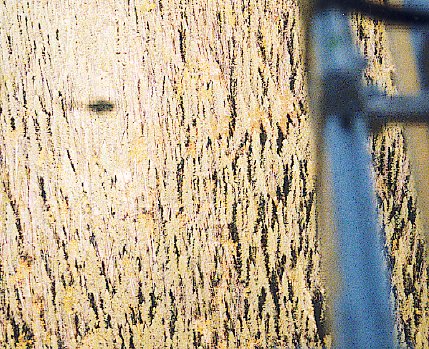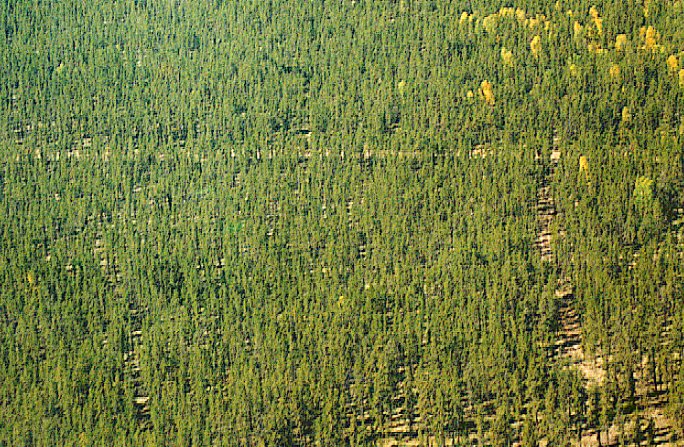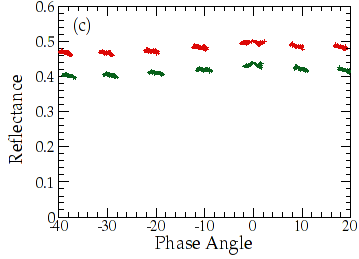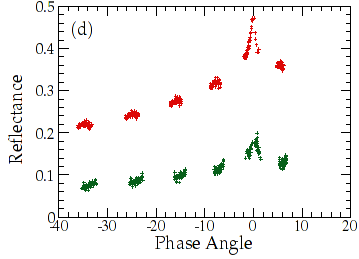
Among Sentinel-2, LANDSAT, Venµs or SPOT4 (Take 5) features, there is one which is frequently forgotten: it is the possibility to observe all lands every Nth day under constant viewing angles. This way of observing limits the directional effects which are one of the most perturbing effects for reflectance time series. Yet, these effects are not always known by the users of time series of remote sensing images.
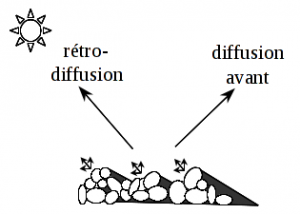 The directional effects are highly visible in the pictures below, which were taken from an helicopter with the same parameters except for the viewing angles. The image on the left was taken with the back to the sun, in the backscattering direction, while the picture on the right was taken at 90 degrees from that direction.
The directional effects are highly visible in the pictures below, which were taken from an helicopter with the same parameters except for the viewing angles. The image on the left was taken with the back to the sun, in the backscattering direction, while the picture on the right was taken at 90 degrees from that direction.
Depending on the observation angles and the solar angles, the reflectances measured by a satellite will change a lot, and we can therefore talk about « reflectance anisotropy », even if « directional effects » is the most frequently used locution. The way they change depends on the surface type : a flat sand desert will have little anisotropy (see next figure on the left), and the surface is said « quasi lambertian ». On the contrary, a calm water surface will behave as a mirror, and will exhibit a very strong reflectance peak on the direction opposite to the sun direction, with regard to the vertical. Finally, vegetation always exhibits reflectance peak in the back scattering direction, for which the solar and viewing angles are quasi identical (see the plot below, on the right). On this plot, a reflectance variation greater than 30% can be observed in a couple of degrees. This phenomenon is called Hot Spot, and it is due to the fact that from this direction, one can only see the sunlit faces. Finally, the plot shows that for an angle variation of 40 degrees, the surface reflectance may change by a factor two. The directional effects should thus not be neglected.
The wide field of view instruments, such as MODIS, SPOT/VEGETATION, MERIS, VIIRS or Proba-V, and the high resolution ones with a pointing capability, such as SPOT, Rapid-Eye or Pleiades, deliver time series acquired under changing angles. Their reflectances time series are thus very noisy if no correction is attempted. NDVI time series are less noisy, because both red and Near Infrared spectral bands exhibit similar variations. Several correction methods were implemented, but their results are far from perfect. In order to avoid all these troubles, my CESBIO colleagues F.Cabot and G. Dedieu invented the RHEA concept, which consists in putting the satellite on an orbit with a short repeat cycle (1 to 5 days), in order to observe a given site under constant angles. The VENµS satellite stems from this concept, and Sentinel-2 and SPOT4 (Take5) as well. Formosat-2 has also a repeat cycle of one day, but this feature is mainly due to the fact that the Taiwan island can be observed every day from that orbit. Regarding LANDSAT, I do not now if its designers wanted to minimize directional effects, but of course their choice was a good choice.Thanks to the satellites that observe under constant viewing angles, the noise on time series is really decreased, as shown on the plot below, which gives the surface reflectances of a wheat pixel (24*24 m²) in Morocco, observed by Formosat-2 during a whole growing season.


Finally, it is the hot spot phenomenon, which gives the solution to the riddle above, since the balloon on the left is surrounded by a brighter halo. It means that the direction around the left ballon is the backscattering direction, and therefore that the observer was on this ballon. This is also proven by the complete photograph (taken by A. Deramecourt, a CNES colleague). I think my colleague saw some poetry in the two balloons hugging, which I hope you still can appreciate, while, because of my professional bias, I only see a mere hot-spot.
Further reading :
There are several other posts about directional effects in this blog, based on a study we did for ESA and Airbus,e to determine if it is possible to extend the field of view of the next generation of Sentinel-2.
[Directional effects] What field of view for the next generation of Sentinel-2 ?
There is an interesting one about the modelling of directional effects with DART 3D radiative transfer model, and its validation using VENµS data :

